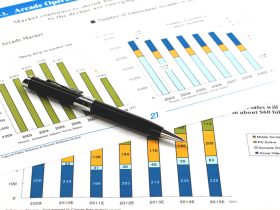By Yoruk Bahceli and Stefano Rebaudo
(Reuters) – For a year European Central Bank interest rate hikes were a done deal for markets, but that phase is over with investors struggling to gauge the outcome of Thursday’s policy meeting.
That’s because price pressures are too sticky for comfort, while economic activity is now slowing sharply.
The question is whether the ECB continues or pauses record-paced rate increases that have lifted rates to 3.75% from negative territory since July 2022.
“It’s such a close call between the pause and the rate hike,” said ING’s global head of macro Carsten Brzeski.
“It’s almost like tossing a coin.”
1/ WILL THEY, WON’T THEY?
Traders are torn but favour an ECB pause, pricing in around a 40% chance of a hike. Those odds keep swinging.
For many economists, one thing is clear: if the ECB has further tightening to deliver, September is likely its last chance.
“If you cannot get yourself to hike in September, the case will not be stronger in October as economic data will likely worsen, and inflation in September will come lower quite a bit,” said UBS chief European economist Reinhard Cluse. He expects a 25 basis-point (bps) increase.
2/ WHAT IS THE ECB MORE WORRIED ABOUT: GROWTH OR INFLATION?
That’s the million dollar question. Core inflation excluding volatile food and energy, down more than expected to 5.3% in August, is still far above the bank’s 2% target and labour markets remain hot.
But economic activity is contracting fast and a cumulative 425 bps of rate hikes have squeezed financing conditions. Lending growth is slowing and euro zone money supply shrank for the first time since 2010 in July.
Doves such as Portugal’s central bank chief Mario Centeno urge caution. Hawks, for instance board member Isabel Schnabel and Austria’s Robert Holzmann, warn a pause is not a done deal, but crucially haven’t explicitly endorsed a hike.
“Our base case is that the ECB as a whole will be more concerned around the growth data and will use the meeting as an opportunity to pause,” said Iain Stealey, CIO of fixed income at JPMorgan Asset Management.
3/ WHAT HAPPENS AFTER SEPTEMBER?
ECB President Christine Lagarde has little room to steer markets. Policymakers have already said that tightening is near an end and that rates will stay high for some time.
“If it’s a hike it will be accompanied by a more dovish statement,” said Brzeski at ING. “If it’s a pause it will be accompanied by a more hawkish statement because in no way can I see the ECB officially announcing the end of rate hikes.”
Markets are hedging their bets, betting on around a 70% chance of another increase by the end of the year.
Traders expect rate cuts from the second half of 2024, but don’t expect Lagarde to affirm that view.
4/ WHAT WILL THE NEW ECB PROJECTIONS SHOW?
Even the hawks, keeping a hike on the table, say fresh ECB projections on Thursday are key to the decision.
Chief economist Philip Lane, close to the forecasts, has said the slowdown in core inflation was in line with June projections.
Economists reckon the ECB will raise its near-term inflation forecasts while cutting growth projections.
Also crucial is whether the 2025 inflation projection at 2.2% is revised down, supporting the case for a pause.
5/ WHAT ABOUT PEPP REINVESTMENTS?
The ECB accelerated its balance sheet wind-down in July, no longer reinvesting proceeds from bonds it holds under its largest scheme, the Asset Purchase Programme (APP).
Inflation is still high and quantitative tightening so far has shown little sign of disrupting markets. So hawks are starting to push for a discussion on ending the more flexible reinvestments from bonds bought under the 1.7 trillion euro ($1.82 trillion) Pandemic Emergency Purchase Programme (PEPP) earlier than the current end-2024 deadline.
“There is a risk that if they don’t raise rates… the hawks want to have a faster balance sheet reduction, which would be painful for the periphery,” said Kaspar Hense, senior portfolio manager at BlueBay Asset Management, referring to highly-indebted countries like Italy.
($1 = 0.9344 euros)
Read the full article here













Leave a Reply